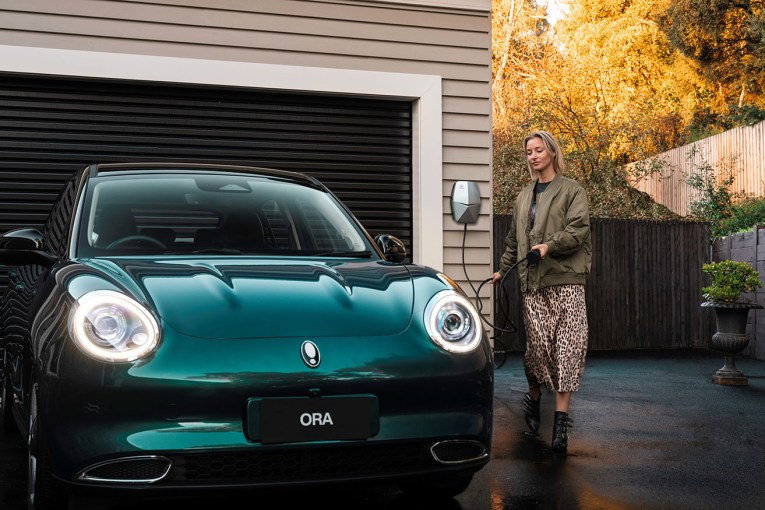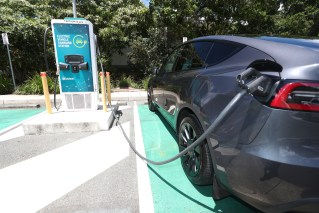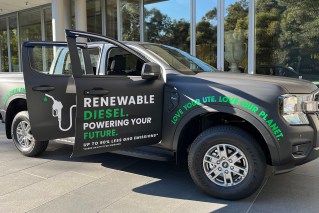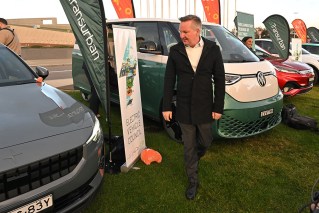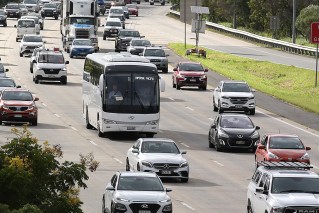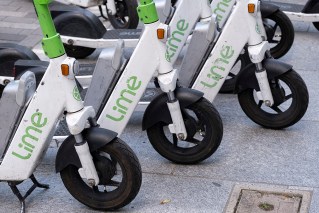Five years on from the day Australian cars died
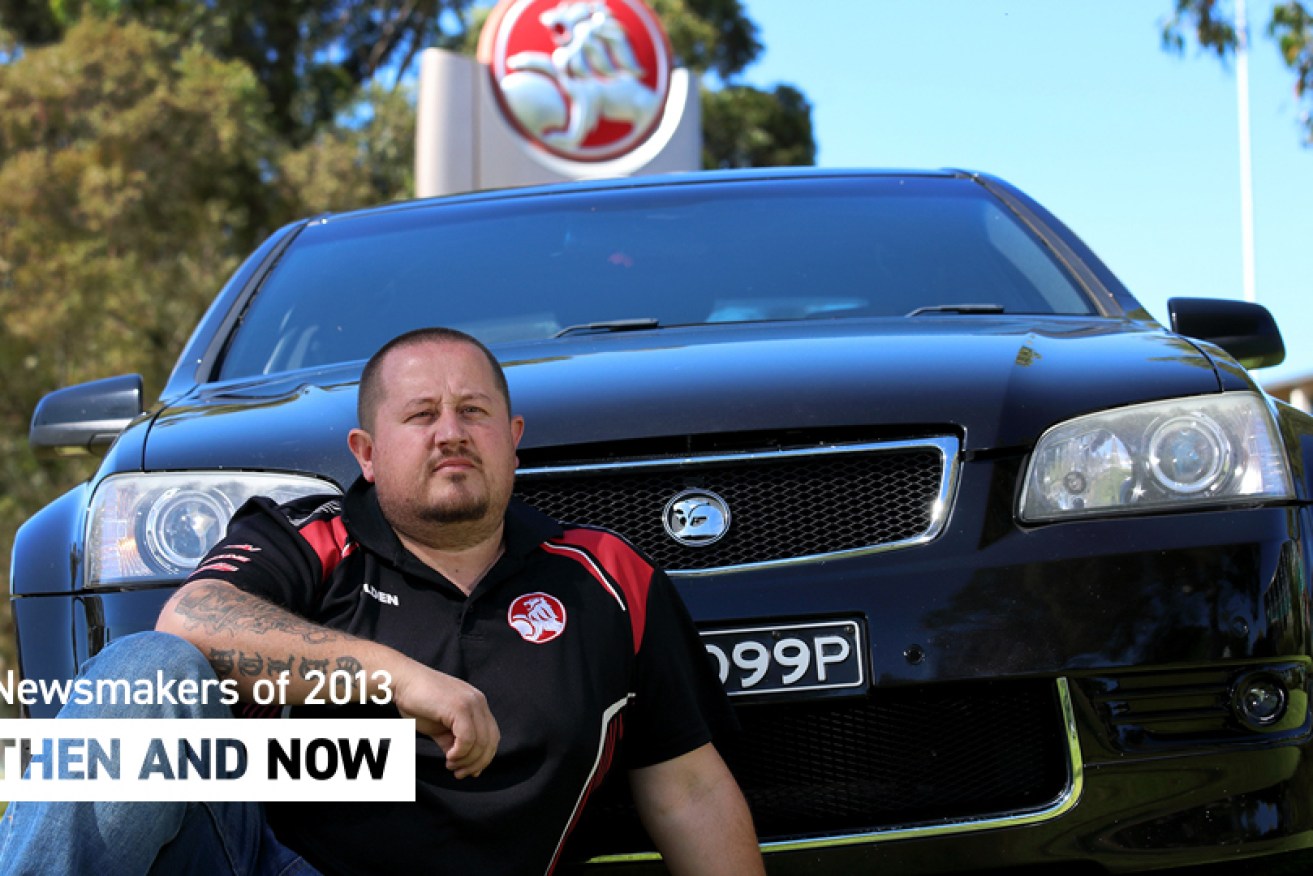
 To celebrate its fifth birthday, The New Daily is looking back at some of the people who made news in our first year. Former Holden factory worker Denis Masters is the fifth and final of our Newsmakers: Then and Now
To celebrate its fifth birthday, The New Daily is looking back at some of the people who made news in our first year. Former Holden factory worker Denis Masters is the fifth and final of our Newsmakers: Then and Now
Denis Masters remembers well that fateful day of December 11, five years ago, when he saw speakers and a stage being set up on the lawns outside Holden’s South Australian factory.
“This is not looking good. There’s something happening,” he thought to himself.
The Waterloo Corner resident, now 42, had good reason to be worried. A day earlier, treasurer Joe Hockey had dared Holden to stop making cars in Australia. “Either you’re here or you’re not,” Mr Hockey thundered from Canberra.
The words echoed in Adelaide.
Holden’s workers were told to down tools and gather on the lawn. The factory was to shut. It was the beginning of the end of car manufacturing in Australia. Ford and Toyota soon followed.

The car maker built its first all-Australian car in 1948. Production ceased in 2017. Photo: Holden
As they heard the news, workers began crying, hugging, swearing.
“We were shocked. Did that really just happen?” Denis recalls.
“And then the anger and the uncertainty. What am I going to do now?”
Some workers had clocked on at the factory for 40 years. Some families had multiple generations – fathers, uncles, brothers, cousins – all there at the same time.
For Denis, his dream of a comfortable retirement was shattered. Over 12 years at the plant, he had worked his way up from production operator to shop steward.
“When I had my uniform on before I went to work, people would look at me and go, ‘Damn, I’d love to work there’,” he says.
“I thought, I’m going to be here for life. I’ll do my time. I’ll slowly work my way up the ranks. We’ll have a lovely home and I’ll be able to retire nicely.
“That all ended in December 2013.”

Denis in his beloved HSV outside the now-shuttered Elizabeth plant. Photo: Tony Lewis
The worst was yet to come, with the first wave of forced redundancies in May 2015.
“They didn’t get enough volunteers, and so we had to watch the boss walk around and tap someone on the shoulder and say, ‘Sorry, you’re being made redundant today’.
“I can’t describe the horrible anxious feeling. People were vomiting.”
Since the Elizabeth factory officially closed last year, Denis – who spent 16-and-a-half years there – has seen first-hand the good stories and the terrible.
As outreach officer at the Australian Manufacturing Workers Union, it is his job to track where each of the laid-off Holden workers has ended up.
“We have had suicides since the closure. I know of two. One is too many.”
On the very last day of manufacturing, October 20, 2017, there were about 1200 workers left. It has now been 13 months since they received redundancy packages.
For some, money is running out.

Many of the final Holden factory workers are still trying to find full-time work. Photo: Holden
The average Holden worker of 15 years would have walked away with a payout around $100,000, or roughly 64 weeks’ pay, Denis says. That package included sick leave, annual leave, unused RDOs and a service bonus.
It may sound like a lot, but the average Holden worker has taken 54 weeks to find full-time work. And they are ineligible for unemployment benefits for 64 weeks.
“We might like to think there isn’t age discrimination, but there is and it’s never going to disappear. That is just a fact,” Denis says.
The closure has taken a heavy toll on families. Many partners have had to increase their hours or do paid work for the first time.
Denis’s beautician partner, Vanessa, has had to up her hours from part-time to almost full-time, and expand her services from hair and nails to spray tans, eyelashes and wedding makeup.
Their new working hours have impacted family time with their daughters, aged 13, 16 and 19.
Like many of the workers, Denis is angry at the government.

Joe Hockey, the day he dared Holden to leave. The company accepted his challenge a day later. Photo: AAP
“Three car makers, early in December 2013, were asking for $500 million over 10 years, which worked out to around $7 per employee in the industry,” he says.
“That money would’ve supported us until 2020, at least. And the government refused.”
He reserves special criticism for Joe Hockey.
“He should be bloody held accountable, mate.
“One of the top things on his and Tony Abbott’s list was manufacturing in this country. Turns out, it was a hit list.”
But Denis also accepts the market was changing, and that Holden had decided to target family drivers over petrol heads.
At its peak, in the early 2000s, the plant was making more than 800 Holdens a day. By 2013, it had dropped to just over 400 – and only around 300 were selling. The factory’s car park was piling up with unsold vehicles.

Holden workers were saluted by the local community as they left the factory for the last time, Denis says. Photo: Holden
“They changed the whole platform of the car. The Holden Commodore was a rear-wheel drive, V6 or V8 vehicle, renowned to be quite sporty. It could tow the caravan or the boat around. A big Bathurst winner.
“Now, we’ve got a smaller version. It’s a front-wheel drive, four cylinder or V6. There’s no V8.
“The car’s excellent. But it’s for a different group of people. An HSV owner will never buy one.
“If you’re a Camry driver, you’ll like the new Commodore.”
Denis’s contract ends in December. He’ll probably be out of work over Christmas, and he can’t receive welfare for a few more months.
His daughters are starting to ask questions.
“It’s not just me that I’m worried about because I’ll have bread and water if I need to,” he says.
“But try telling that to a 13-year-old girl.”
Is there any work going in your office, he asks. Perhaps he isn’t joking.
“I’ll move the whole family.”
